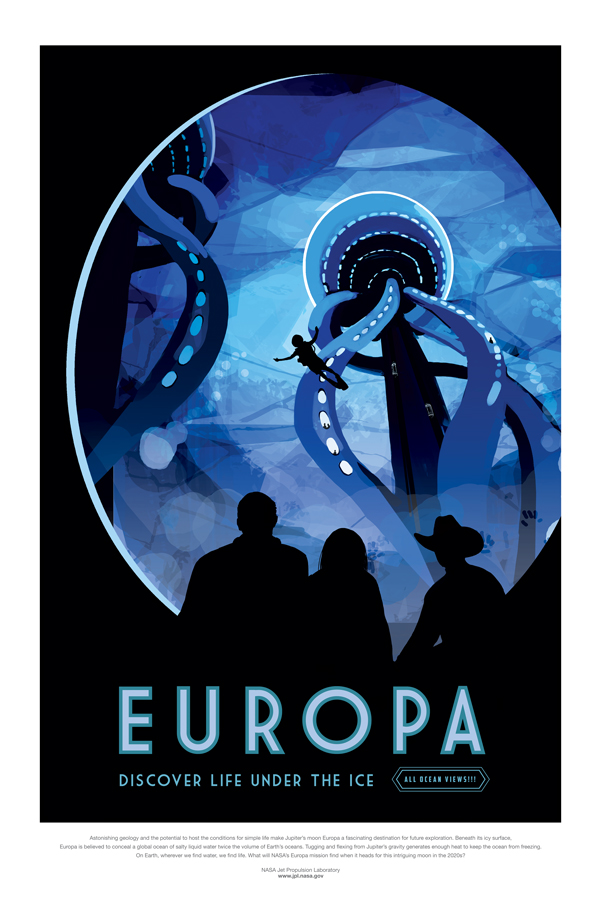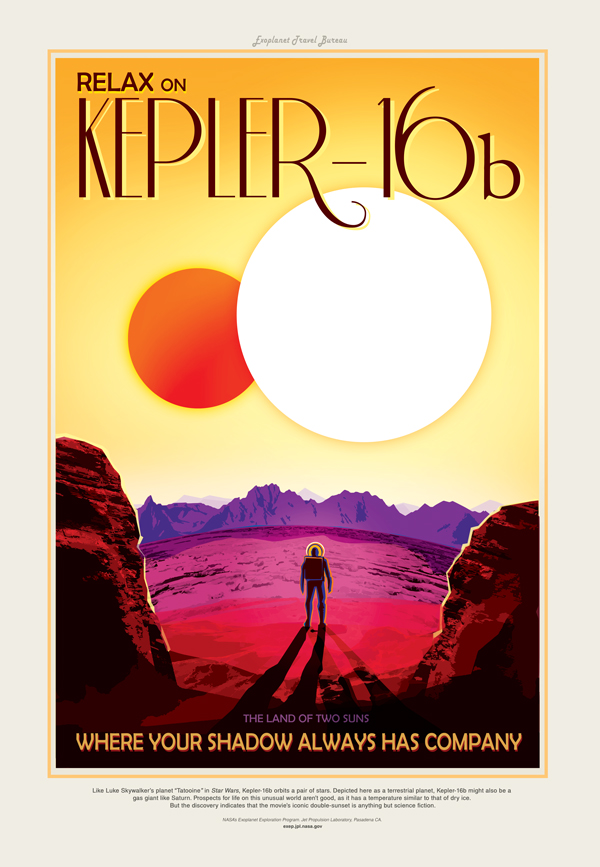
America’s lead space agency asks artists to sell us the holiday of the future and their response opens up some amazing possibilities
Imagination is our window into the future. So says Nasa’s Jet Propulsion Laboratory (JPL) at the California Institute of Technology. The lab always tries to be bold in advancing the edge of possibility so that someday, with the help of new generations of innovators and explorers, such visions of the future can become a reality. This Visions of the Future project saw artists, designers and illustrators conduct brainstorming sessions with JPL scientists, engineers and expert communicators to create a poster series in which each destination is as realistic and practical as possible.

“The point was to share a sense of things on the edge of possibility that are closely tied to the work our people are doing today,” says JPL creative strategist David Delgado. The Nasa programme that focuses on finding and studying exoplanets is managed by JPL.
In the days of Elon Musk-driven post-science fiction, JPL’s visionary posters seem prescient indeed. Why? Last month, following the successful reuse of one of its Falcon 9 rockets, Musk took to Twitter to share his next goal with SpaceX: to turn around its rockets for reuse within 24 hours of landing. “Incredibly proud of the SpaceX team for achieving this milestone in space. Next goal is reflight within 24 hours,” he wrote. By so doing, the cosmopreneur can lower the cost of space launches by as much as 30 per cent, thus saving multiple millions of dollars. And make spaceflight more like aircraft travel.

“We’re really looking for true operational reuseability, like an aircraft,” SpaceX president Gwynne Shotwell said of the launch. “An aircraft lands, goes to the gate, passengers come off, passengers go on, you refuel, and then you fly again. What we’re looking to do is exactly that. We land and relaunch on the same day.”
That’s not as outlandish as it once sounded. Given faster turnaround times with trips to space, an imminent and tiny colonisation becomes more legitimate. Musk has already spoken of launching an Interplanetary Transit System to run supply lines between planets.

In March, SpaceX revealed plans to fly the first two private citizens around the Moon by the end of next year, on a journey that would take around six days. Although a private trip, it has Nasa’s approval. Musk and SpaceX also plan to put humans on Mars by 2025.
On its site, JPL says: “As you look through these images of imaginative travel destinations, remember that you can be an architect of the future.” Right now, that’s beginning to feel increasingly present. And who wouldn’t fancy a little otherwordly sightseeing? And the bragging rights of being the first to do and see it. These are halcyon times indeed on humanity’s journey into the new frontier, as the stellarium beckons.






